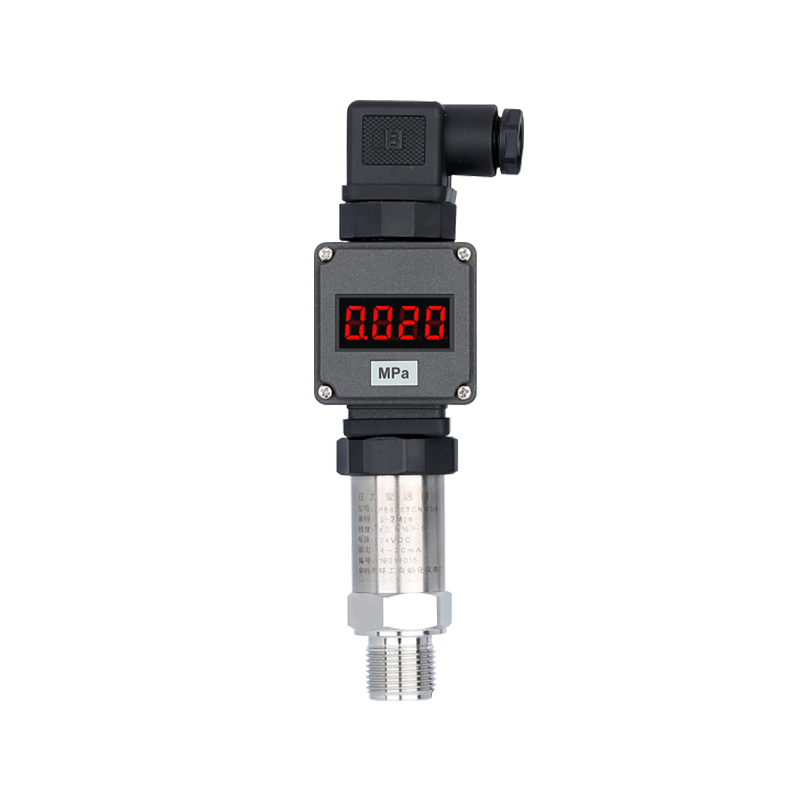Environmental conditions, including humidity and vibration, can significantly impact the reliability and longevity of industrial pressure transmitters. Here's how:
Humidity:
Corrosion Resistance: Given the corrosive nature of high humidity, industrial pressure transmitters often incorporate corrosion-resistant materials like 316 stainless steel or titanium. These materials provide a robust defense against rust and degradation, ensuring the longevity of critical components.
Sealed Enclosures: In addition to material choices, pressure transmitters utilize sealed enclosures, often rated with an Ingress Protection (IP) code. Sealed enclosures prevent moisture infiltration, safeguarding internal electronics and ensuring consistent performance in humid conditions.
Hygroscopic Desiccants: Some advanced transmitters employ hygroscopic desiccants within their enclosures. These materials actively absorb moisture, maintaining a dry internal environment and preventing issues such as condensation or corrosion on sensitive electronics.
Vibration:
Structural Rigidity: To combat the adverse effects of vibrations, pressure transmitters are engineered with enhanced structural rigidity. Reinforced casings and internal structures withstand mechanical stresses, ensuring the device remains intact and fully functional in environments with substantial vibrations.
Isolation Techniques: Specialized mounting and isolation techniques, such as spring-loaded assemblies or elastomeric materials, are employed to isolate the pressure transmitter from external vibrations. These techniques prevent mechanical resonance and minimize the impact of vibrational forces on measurement accuracy.
Combined Effects:
Dual-Seal Protection: Pressure transmitters facing both high humidity and vibrations often feature dual-seal protection. This entails multiple layers of seals and gaskets, adding an extra barrier against moisture and contaminants. The redundancy enhances the reliability of the sealing system.
Stress-Testing Procedures: During manufacturing, pressure transmitters undergo rigorous stress-testing procedures to simulate real-world conditions. This includes subjecting the device to simultaneous humidity and vibration stresses, ensuring it can withstand and perform optimally in challenging environments.
Protection Measures:
Parylene Coating: In addition to traditional coatings, some pressure transmitters employ advanced protective measures like parylene coating. Parylene forms a thin, uniform layer over components, offering superior moisture and chemical resistance without affecting the performance of sensitive electronics.
Advanced Sealing Technologies: Utilizing cutting-edge sealing technologies, such as laser-welded seams or O-ring designs, contributes to the overall robustness of pressure transmitters. These technologies enhance the device's resistance to environmental factors and ensure a reliable seal over an extended lifespan.
Regular Maintenance:
Remote Diagnostics: Modern pressure transmitters often come equipped with remote diagnostic capabilities. These features allow maintenance personnel to monitor the health of the device in real-time, enabling predictive maintenance strategies and minimizing unplanned downtime.
User-Friendly Calibration: Manufacturers design pressure transmitters with user-friendly calibration procedures. This facilitates regular calibration checks, empowering end-users to maintain the device's accuracy and performance without the need for extensive technical expertise.
Environmental Rating:
Customization Options: Manufacturers may offer customization options for pressure transmitters, allowing users to tailor the device to specific environmental challenges. This can include selecting specialized coatings, materials, or additional protective features based on the unique demands of the application.
Certifications and Standards: Pressure transmitters designed for challenging environments often adhere to industry-specific certifications and standards. Compliance with standards such as NEMA or IECEx ensures that the device meets rigorous criteria for environmental robustness and safety.
PB8303CNM pressure transmitters

